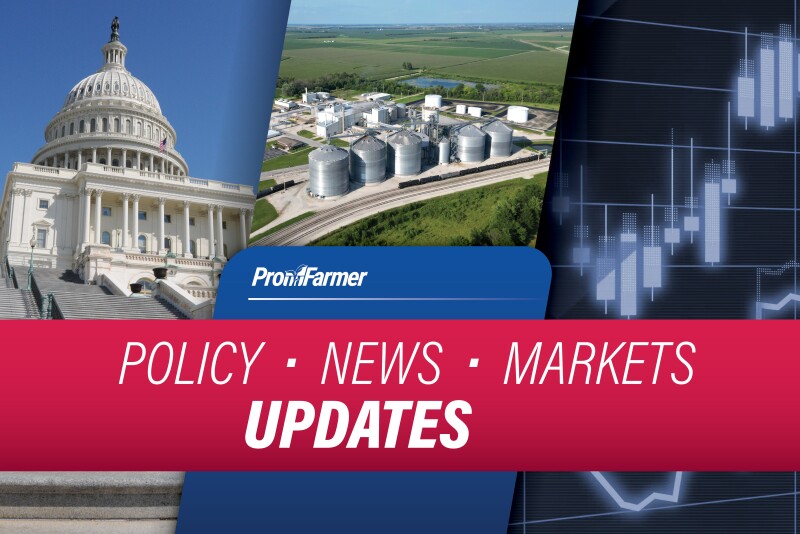- Fed’s Latest Rate Decision: The Federal Reserve chose to keep benchmark interest rates unchanged at 4.25 %–4.50 % following its July 2025 meeting. That means borrowing costs won’t change overnight, but it’s not a signal to relax. For farmers and ag lenders, this decision brings a dose of short-term certainty, but it also sends a clear message that the Fed isn’t ready to ease just yet.
Trade tensions, biofuel uncertainty hit agribusiness profits: Ongoing trade tensions and uncertainty about U.S. biofuel policy contributed to second quarter profits hitting multi-year lows for a number of crop trading companies — including Archer-Daniels-Midland and Bunge Global SA — while ag equipment manufacturers warned those trade tensions will begin increasing equipment prices in the second half of the year.
Reuters’ Karl Plume and Katha Kalia reported that “Archer-Daniels-Midland posted its lowest second-quarter profit in five years on Tuesday as U.S. trade upheaval and uncertainty around biofuel policies slowed sales and crimped trading and crop processing margins.”
- Who wins and who loses from Trump’s new Brazil tariff?: President Donald Trump’s steep new tariffs on Brazil took effect Wednesday, subjecting around a third of Brazilian exports to the U.S. to 50% duties. While some U.S. ag industries stand to benefit from higher prices and reduced competition, other countries also stand to gain and, in some cases, U.S. consumers and downstream industries will likely bear significant new costs.
- Latest round of tariff exemptions raises questions of influence: Senate Democrats and industries are questioning how a recent list of products exempt from new tariffs on Brazil was assembled; some would like to see a more transparent and formal process.
- Farm and sugar experts highlight challenging market conditions: Immense financial pressures and predatory international trade practices are threatening American family farms and factories. Farm economy and sugar policy experts presented on the challenges facing the U.S. sugar industry at the American Sugar Alliance’s 40th annual meeting this week.
Will environmental reforms ease California’s farmworker crisis?: The shortage of affordable housing in the United States is starting to get nationwide attention. For Californians, access to housing has been a crisis for some time, and the state’s agricultural workforce has been uniquely affected by a lack of housing availability.
State-level legislation signed into law June 30 promises to boost housing production through reforms limiting the reach of the California Environmental Quality Act, a stringent law that many housing activists point to as one principal cause of California’s housing problems.
The new law can limit CEQA reviews for housing and infrastructure, including farmworker housing. To understand its potential impact, we will explore just how bad the farmworker housing situation is in California and how the latest CEQA reforms could potentially improve the situation.
Following the USDA’s food and farm funding. Here’s what’s been canceled and frozen, and resources for those affected: In the first seven months of President Donald Trump’s second administration, the federal funding landscape has been radically changed — especially for the people who grow, harvest, and distribute food. Thousands of government staffers were terminated; entire programs have been stripped down; and a grant freeze has immobilized state, regional, and local food systems that rely on federal funding.
In all of the turmoil, the communication from the Department of Agriculture itself has lacked transparency and comprehensiveness, Grist reported. The nonprofit media organization has heard over and over from their sources — farmers, food organizations, agricultural networks, and advocates across the country — that they remain confused and in search of reliable information. Folks need clarity about what is happening, support during a difficult moment, and alternatives to the current faltering system.
In response to those needs, today, Grist published this information guide. You’ll find more details about the status of various USDA programs; resources for those struggling with financial and/or mental health hardships; and some conversation starters to help you envision a more resilient food economy.

